Inside: Spring is the perfect time for growing a vegetable garden with your kids and summer is the best time for reaping the benefits of that garden. Here is a healthy summer salad created by our family from the many veggies we grow in our garden each year. These six simple ingredients are packed with vitamins, minerals, and nutrients that will build your body, help you lose weight and give you glowing skin.
Healthy Summer Salad Made From Veggies in Your Garden
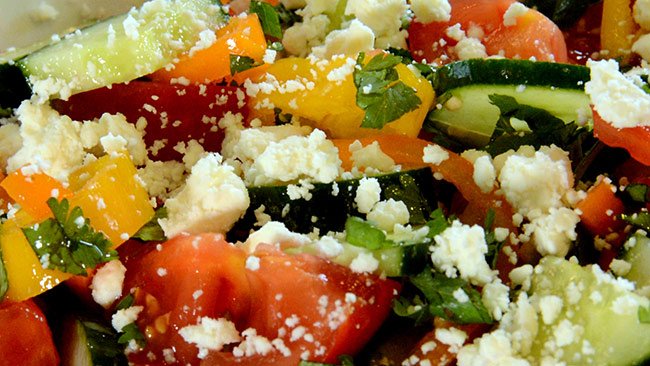
This is a delicious and easy salad to fix. And–you will get hooked and want to eat it every day. The vegetables are fabulous, but adding the sea salt, cilantro and feta cheese make it amazing! Hope you enjoy it as much as our family does.
When was the last time you planted a vegetable garden with your kids? What did you grow? I recently posted a blog on gardening with kids and it’s filled with lots of great information on planting a veggie garden with your kids. You can access the blog here.
When our kids were growing up, we planted a vegetable garden every year. They helped by choosing the veggies; planting the seeds; weeding and watering; picking the produce and eating the end result.
Planting a vegetable garden with your kids can become a fun tradition that everyone in the family will love, remember, and want to replicate with their future families. Plus, it’s a great activity to do with your grandkids.
Healthy Summer Salad Recipe Made with “Healthy Smart Kids in the Kitchen”
Over the years, our family has concocted different recipes to utilize the various veggies from our garden. Here is one of our family’s original healthy summer salad recipes. It’s delicious, nutritious, and your kids will LOVE helping to make this simple salad. Tips are included for you to share with your children and make it a multi-level learning kitchen experience.
First, show your kids this video so they can see how easy it is to put the salad together. And hopefully, you’ll be able to use veggies from your garden in the recipe.
Watch this 1-minute video demonstration on how to put this salad together:
Healthy Summer Salad
- 4-6 tomatoes (any kind except Roma)
- ½ Japanese cucumber
- 4-6 mini sweet bell peppers
- ¼ cup cilantro (adjust according to taste)
- ⅛-¼ cup feta cheese
- 2-3 teaspoons sea salt (my favorite brand is Celtic Sea Salt®)
- Cut and dice the tomatoes.
- Cut and dice the cucumber
- Slice the peppers horizontally
- Chop the cilantro
- Sprinkle the sea salt over all
- Gently toss all the ingredients together except the feta cheese
- Refrigerate for 20-30 minutes. The sea salt brings together all the flavors and enhances the taste.
- Before serving, sprinkle with feta cheese
Help your kids understand just how important eating veggies are by sharing with them these 18 nutritional facts and tips. This salad includes cucumbers, so if you missed my blog on 25 Unique and Surprising Benefits of Cucumbers, take a peek here. And don’t forget to check out the additional tips for your children at the end.
A Kitchen Science Tip for Healthy Smart Kids in the Kitchen
Kitchen Science Tip #1: Eat this Salad at Room Temperature
Most people like to eat salads cold. However, if you want the tomatoes to taste the most savory, eat the salad at room temperature. Tomatoes contain linolenic acid which is converted to Z-3 hexenal, the compound that makes vine-ripe tomatoes taste and smell so amazing. Tomatoes that are refrigerated lose some of the Z-3 hexenal molecules that help us to smell and get the best taste from the tomatoes. When served at room temperature all the aromatic compounds in the tomatoes are experienced.
18 Benefits of Tomatoes, Peppers and Sea Salt
(or 18 reasons why every member of the family should eat this tasty summer salad!)

Tomatoes have many important benefits–one of the biggest being it contains the carotenoid, lycopene–which gives the tomato it’s beautiful red color and anti-cancer properties. Include tomatoes–cooked or fresh–in your diet–every day!
Tomatoes: 10 Benefits
Share with your kids these awesome benefits they will experience when adding tomatoes to their diets:
1. Contains the Important Carotenoid Lycopene: Anticancer Properties
Phytochemicals or carotenoids are what give veggies and fruits their beautiful colors and protect the plants from disease. When we eat them, we enjoy the full benefits of that protection. Lycopene is the carotenoid that gives the tomato its beautiful red color and provides many lifesaving nutrients.
For starters, lycopene has anticancer properties and protects against a host of different cancers including:
- Lung
- Stomach
- Pancreatic
- Colorectal
- Esophageal
- Oral
- Breast and cervical cancers
Needless to say, it packs a pretty powerful punch. And the lycopene found in processed tomatoes such as sauces, soups, or paste is more effective than raw tomatoes for reducing cancer risk. So, bring on the pizza (as long as it’s the healthy version)!
2. Protects Against Heart Attacks
Ever look at the inside of a tomato? When cut crosswise, you can see four chambers or sections. If you read my blog on the Doctrine of Signatures, it states that the shape and color of a veggie help us to determine what part of the body it supports. Tomatoes are red, have four chambers—all like your heart. AND research shows tomatoes do indeed help protect the heart.
Again, “blame” the lycopene! It’s a powerful antioxidant that is concentrated in the cells of the heart and protects against oxidative damage which reduces the risk of heart attacks. If your child has a weak heart—tomatoes may help.
3. Contains Vitamins A, B complex and C
Tomatoes are an excellent source of these vitamins which will increase your child’s immune system and keep them healthy and well. But, if you purchase tomatoes grown from a hothouse as opposed to a vine-ripened tomato, you lose half the vitamin C. Bottom line: stick to the vine-ripe tomato.
4. Processed Tomatoes are Even Good for You!
Yes, there is nothing like a vine-ripe tomato to eat on a hot summer day in salads or just by itself, but believe it or not, processed tomatoes are even better for you than one plucked from the vine. Why? The lycopene found in processed tomatoes (think paste or sauce) is more easily absorbed and used by the body. In fact, processed tomatoes contain two to eight times the available lycopene of raw tomatoes. Which means–spaghetti sauce is good for your kids!
5. Eat Your Tomatoes with Fat
Lycopene is a fat-soluble nutrient which means it needs fat for best absorption. Encourage your kids to eat raw tomatoes with fats such as cheese, olive oil, avocados or nuts.
6. Three Disease-Fighting Antioxidants
Tomatoes contain a trio of antioxidants that fight disease including phytoene, phytofluene, and Zera-carotene. Scientists believe that these three antioxidants have a triple effect of disease-fighting potential. In other words–eating tomatoes improves your child’s immune system and keeps them healthy.
7. Lutein/Zeaxanthin for the Eyes
Tomatoes (also sweet peppers) contain lutein/zeaxanthin—a compound that is found in the retina of the eye and is important for healthy vision and may even prevent macular degeneration. Since kids today spend long hours on the computer, eating tomatoes will keep their eyesight intact.
8. Sun Protector for the Skin
When combined with other nutrients, lycopene can act as a sunblock for the skin. Note: eating tomato paste (soups, pizzas) will protect the skin against damaging ultraviolet rays up to 40 percent more than a raw tomato.
9. Anti-aging Factor
It seems that lycopene helps with anti-aging. A study conducted on nuns found those with the highest levels of lycopene in their blood were more self-sufficient. They were able to care for themselves and complete everyday tasks better than those who did not show the same levels. As your kids eat a consistent diet of tomatoes–it will help their minds and ability to function as they age.
10. Tomatoes (and cucumbers) are Good for Weight-Loss
Dr. Ann Kulze, wellness, and nutrition specialist call tomatoes a “superstar” weight-loss vegetable. They are low in calories and mainly water. Dr. Jonny Bowden, Ph.D., a clinical nutrition specialist says that tomatoes are “high-volume” foods and are ideal for weight loss because they have high amounts of water, air, and fiber and are low in calories. Incorporating both raw cucumbers and tomatoes into your diet can help you shed unwanted pounds.
Obesity is on the rise with kids and teens–feed them tomatoes as a healthy snack.
Sweet Peppers: 5 Benefits
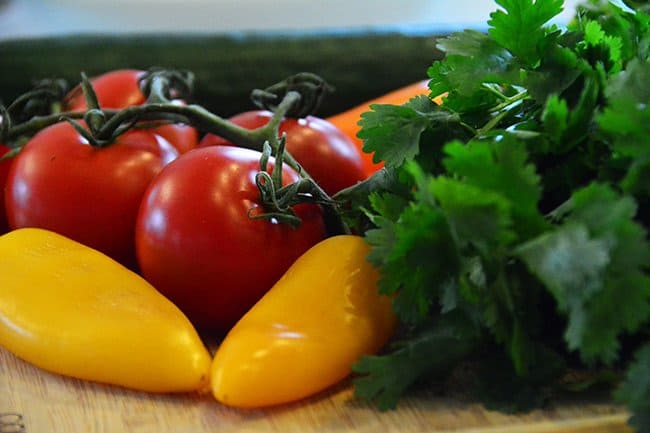
There are small seeds inside the peppers. Don’t wash them away–add them to the salad. The seeds are the lifeforce of any veggie (or fruit) so whenever possible–eat them!
Did you know that sweet peppers actually start out as green peppers but when they are fully mature, they change into vibrant red, orange and yellow colors? Those gorgeous colors are phytochemicals that protect us against disease. Here’s why they are a perfect addition to your kid’s diets:
1. Great source of Vitamins
Peppers are an excellent source of vitamins C and A (beta-carotene), folic acid, potassium, B vitamins, and bioflavonoids. They also contain vitamin K which is associated with healthy bones.
2. Helps with Night Vision
Peppers are high in vitamin A which helps to support night vision. However, peppers contain the plant-form of vitamin A which must change to the fat-soluble form for our bodies to use to support night vision.
3. Speeds Up Metabolism
Red peppers can actually speed up our metabolism because of a process called thermogenesis. It does so without increasing our heart rate and blood pressure.
4. Helps with Weight Loss
Sweet peppers are low in calories—between 29 and 37 to be exact. Because of this they are a great snack and can help with weight loss or help to maintain weight
5. Keeps Your Skin Glowing
Sweet peppers contain high amounts of vitamin C which supports collagen production in the skin and keeps it healthy and glowing. Teens are always looking for ways to improve their skin–so feed them sweet peppers.
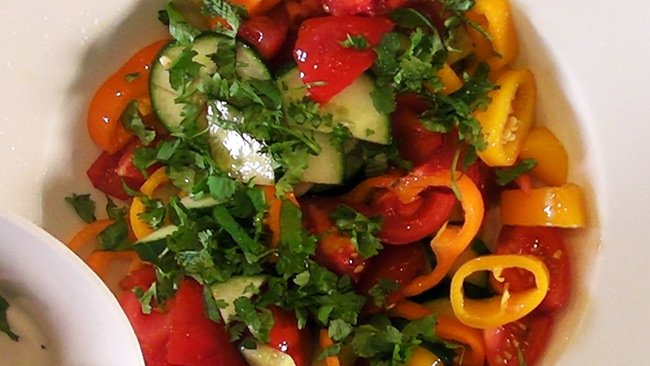
The “secret” ingredient in this salad is sea salt. It brings out and enhances the flavors of all the veggies.
Sea Salt: 3 Benefits
My recipe includes sea salt and my favorite brand is Celtic Sea Salt®. Here are some benefits and why you should include salt in the salad:
1. A Rich Source of Minerals
Our children need minerals in order for all the vitamins they consume to work. Sea salt is rich in minerals and trace minerals—60 different ones to be exact.
2. Helps with Digestion
Believe it or not, salt actually helps with digestion. The proper amounts of salt in your diet stimulates the production of hydrochloric acid (HCL) which aids in digestion.
3. Helps with the Function of the Brain, Muscle and Nervous System
Salt regulates water and the transmission of electrical signals in our bodies. When this system is not working properly, our body’s communication system can get thrown off and our brain, muscle, and nervous systems can suffer. We are told to watch our salt intake, but getting a balanced amount of sea salt is essential for proper brain, muscle, and nervous system function.
Healthy Summer Salad: Involve Your Kids in the Kitchen
When making the salad, have your kids help with the slicing, dicing, and cutting of the veggies. If you’re not using veggies from your garden, take your kids to the grocery store and have them help pick out all the veggies.

Here are all the ingredients used in this salad: tomatoes, cucumbers, peppers, cilantro, sea salt, and feta cheese. This is a refreshing summer salad; easy to make and best of all…your kids will love helping to make it.
Parents–take a look at this chart and share the information with your children.
Does your family have a favorite salad recipe that uses ingredients found in most veggie gardens? Please share in the comment section below.
Want to remember this post? Post, “How to Make the Best Healthy Summer Salad With Your Kids,” to your favorite Pinterest board!
FAQ’s
What is a healthy salad?
A healthy salad is one that makes you healthy and strong and does not cause digestive issues. Most healthy salads are filled with veggies, seeds, eggs, and optional meat. They utilize a dressing that contains good fats or simply sea salt that brings out the flavors of the ingredients. An amazingly healthy salad will include tomatoes, sweet peppers, cucumbers, spinach and a smattering of broccoli and a dash of sea salt. Veggies make the salad healthy by furnishing the vitamins, minerals, phytochemicals, and enzymes needed for the body to function and grow. Choose vegetables for a salad that are in season as they will contain the greatest nutritional benefits.
Is chef salad healthy?
A chef salad can be very healthy as most include various kinds of lettuce, hard-boiled eggs, meat, and swiss cheese. However, the dressing can be loaded with unhealthy fats and a few tablespoons of dressing can quickly add up to 1000 calories and include 100 grams of fat. Stick with a dressing that uses olive oil or even coconut oil. They’re healthy fats that build the brain and provide sustained energy.
Why should you eat salad?
The vegetables in salads provide fiber and enzymes and help digestion. They also contain phytochemicals that give the veggies their beautiful colors and protect us against disease. Vegetable salads contain important vitamins, minerals, disease-fighting antioxidants, and antiaging factors. Because they are low in calories with high-water content, they help with weight loss. You’re never wrong when opting for a healthy salad.



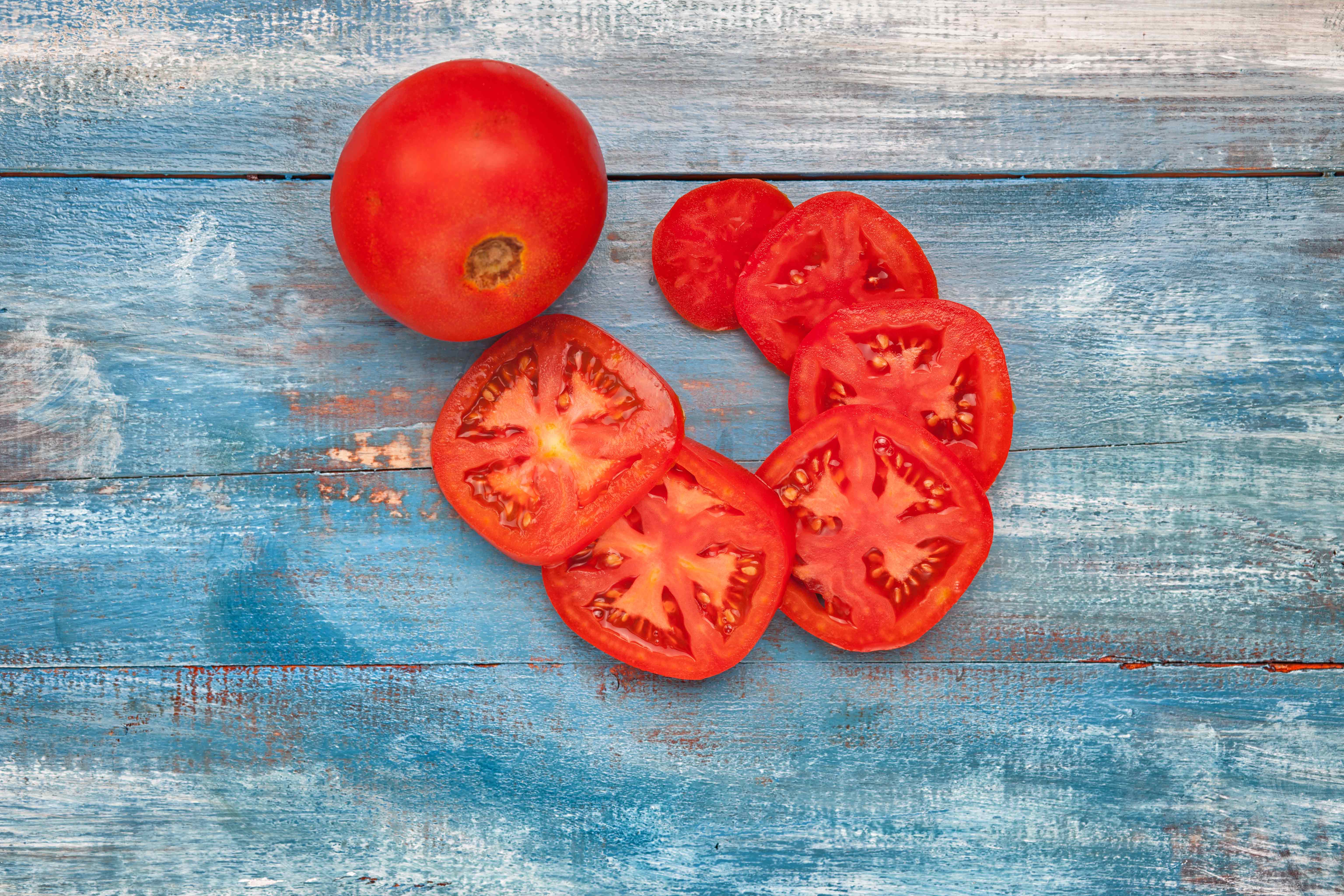
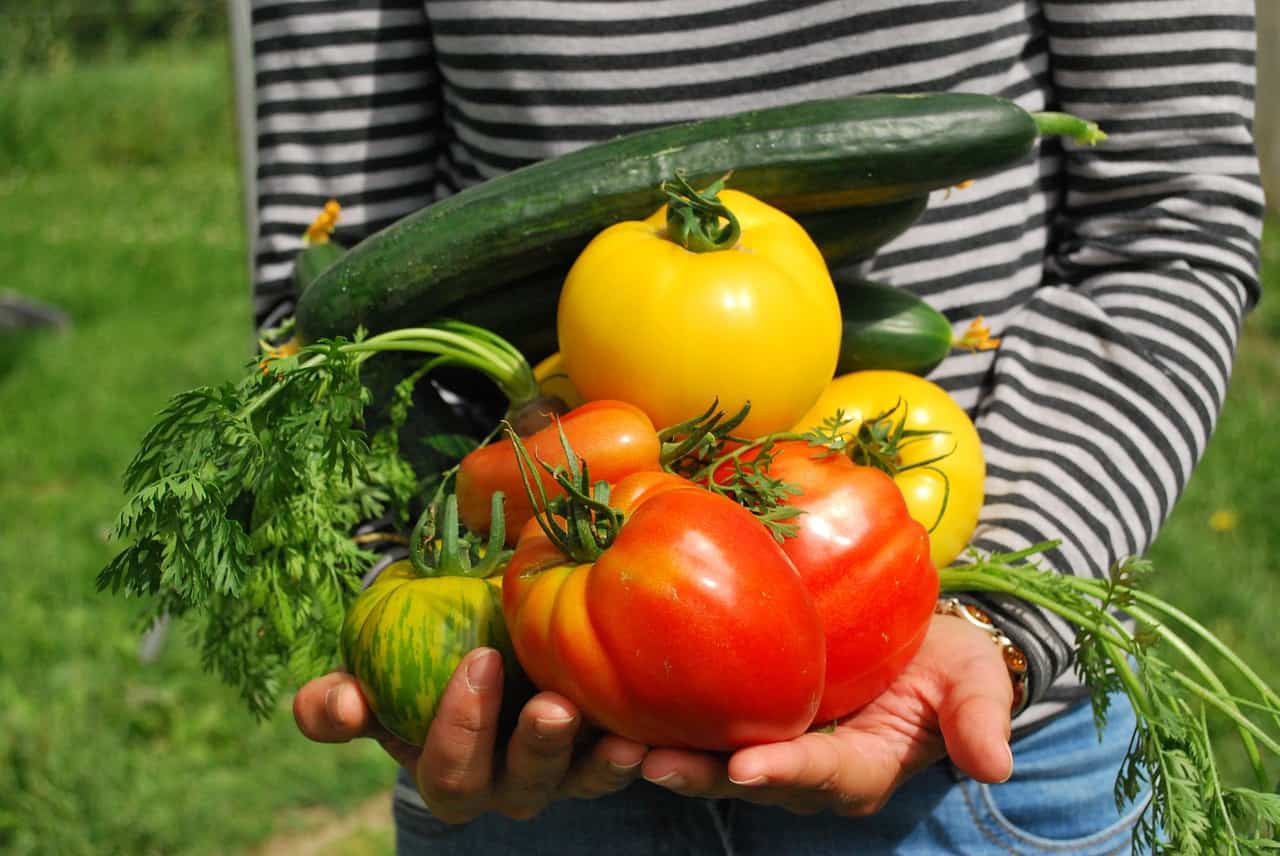


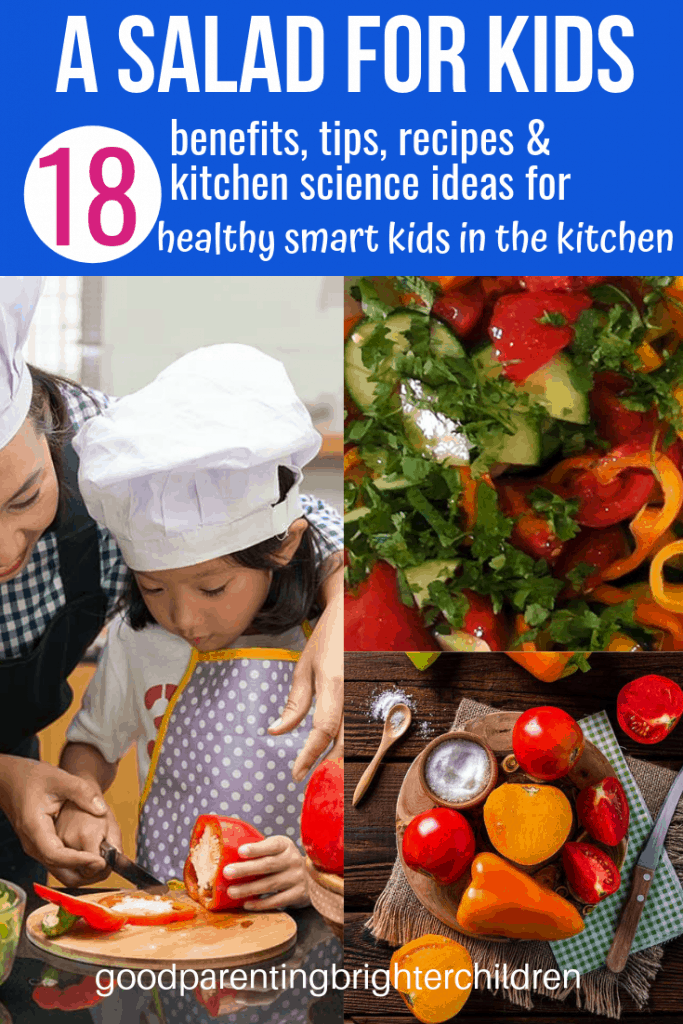


You are single-handedly motivating me to actually care about cooking/preparing food….something I normally dread. Thank you so much!
Ha-ha! Thank you, Antonietta! But, get your kids involved with you–the ONLY reason I loved fractions was that I started cooking/baking around age 8. It helped me to understand a lot of things about math and when you cook and bake–it’s such quick gratification of making something that turns out well and tastes good. Thanks for sharing!
YES! I love spiralizing so, so much and this salad looks delicious, colorful and above all it’s healthy. Love the addition of the cheese. I will try it for my loving child.
Thank you! It really is delicious and so easy–hope you enjoy making it with your child! And the cheese helps to get the best nutrients from the tomatoes (particularly the lycopene).
This recipe speaks right to my love language, Sharlene! You had me at feta cheese 🙂 I can’t wait to give this recipe a try.
I’ve always wanted to start my own garden but have been hesitant as I kill any plant that I come in contact with. Poor plants! This post has me really wanting to just bit the bullet and get to planting. As always, thanks for the inspiration!
I’m the same Tiffany–I kill all my plants. However–I found a way to make them grow–I play classical music for them–and I’m not kidding. I’d sing to the plants, but that would kill them for sure so I play music for them. And I had my kids talk to the plants when they went out to hand-water them. It seemed to work. I just noticed something else–you can also use chopped basil in this salad–instead of cilantro. Thanks for sharing! (as always!)